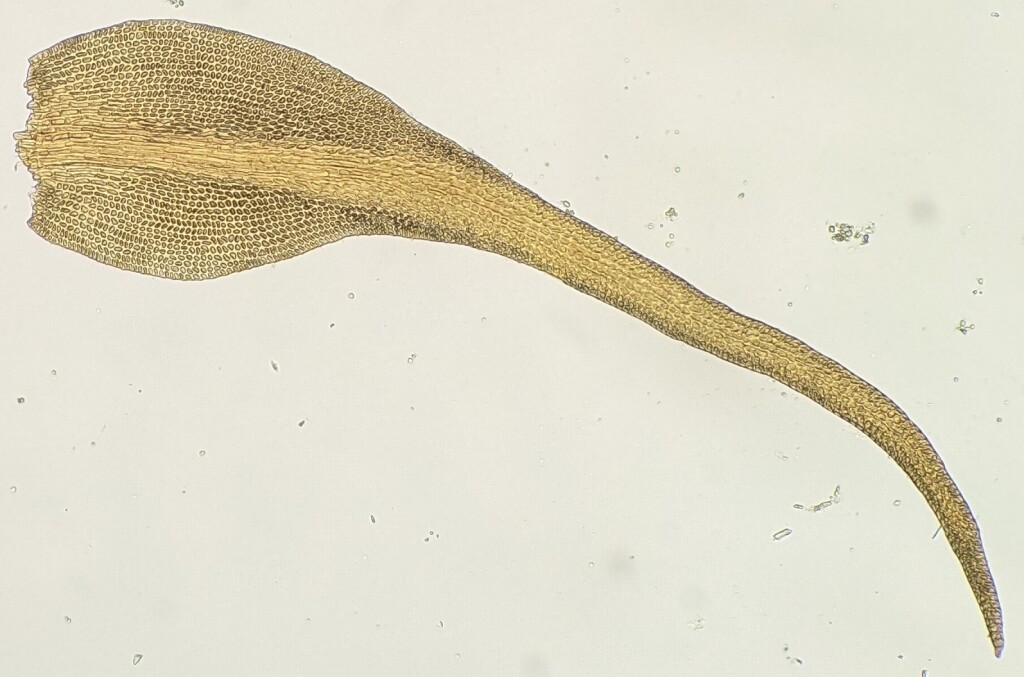Seligeriaceae
Dioicous or autoicous (not in Victoria). Asexual propagules absent. Minute and gregarious (not in Victoria) or larger and forming compact mats, tufts or cushions, on rock, often aquatic. Stem simple or forked, often repetitively, glabrous or with sparse rhizoids; central strand present or absent (not in Victoria). Leaves arranged around stem and facing all directions, monomorphic, linear (not in Victoria), lanceolate or subulate often from a differentiated sheathing base, erect-spreading to squarrose (not in Victoria), often falcate and secund when moist, barely altered or becoming erect (not in Victoria), flexuose or crisped when dry; apex subulate; costa, single, subpercurrent (not in Victoria), percurrent or excurrent; margin entire to denticulate, plane or incurved, without a border or with a border of hyaline cells near base; laminal cells rectangular, linear or subquadrate (not in Victoria), usually longer in base, smooth; alar cells not differentiated or differentiated and inflated and coloured or hyaline. Acrocarpous. Seta straight to cygneous. Capsule erect, symmetric, cylindric-ovate, globose, cupulate or turbinate, emergent (not in Victoria) or exserted, operculate, smooth, without an annulus or annulus poorly differentiated (not in Victoria). Calyptra cucullate, smooth, glabrous. Operculum rostrate, sometimes remaining attached to the exserted columella. Peristome absent (not in Victoria) or of 16 entire teeth in a single series, sometimes with preperistome (not in Victoria).
Five genera and 39 species, mostly from cold-temperate and subpolar regions, but with a few species from high altitude in tropical regions; two genera and species in Victoria.
Phylogenetic analyses of chloroplast DNA sequences have shown that the morphology that defined the genus Blindia, including falcate leaves, differentiated alar cells, elongate to linear laminal cells in the apical half and poorly differentiated costal anatomy in cross-section, has arisen in two separate families, the Seligeriaceae and the Rhabdoweisiaceae, probably as an adaption to their cold and wet environment (Fedosov et al. 2021). Consequently, there is morphological overlap between this family and the Rhabdoweisiaceae and it is hard to distinguish this family from others on a purely morphological basis (Fedosov et al. 2021).
 Spinning
SpinningFedosov, V.E.; Fedorova, A.V.; Larraín, J.; Santos, M.B.; Stech, M.; Kučera, J.; Brinda, J.C.; Tubanova, D.Y.; Von Konrat, M.; Ignatova, E.A.; Ignatov, M.S. (2021). Unity in diversity: phylogenetics and taxonomy of Rhabdoweisiaceae (Dicranales, Bryophyta). Botanical Journal of the Linnean Society 195: 545–567.


